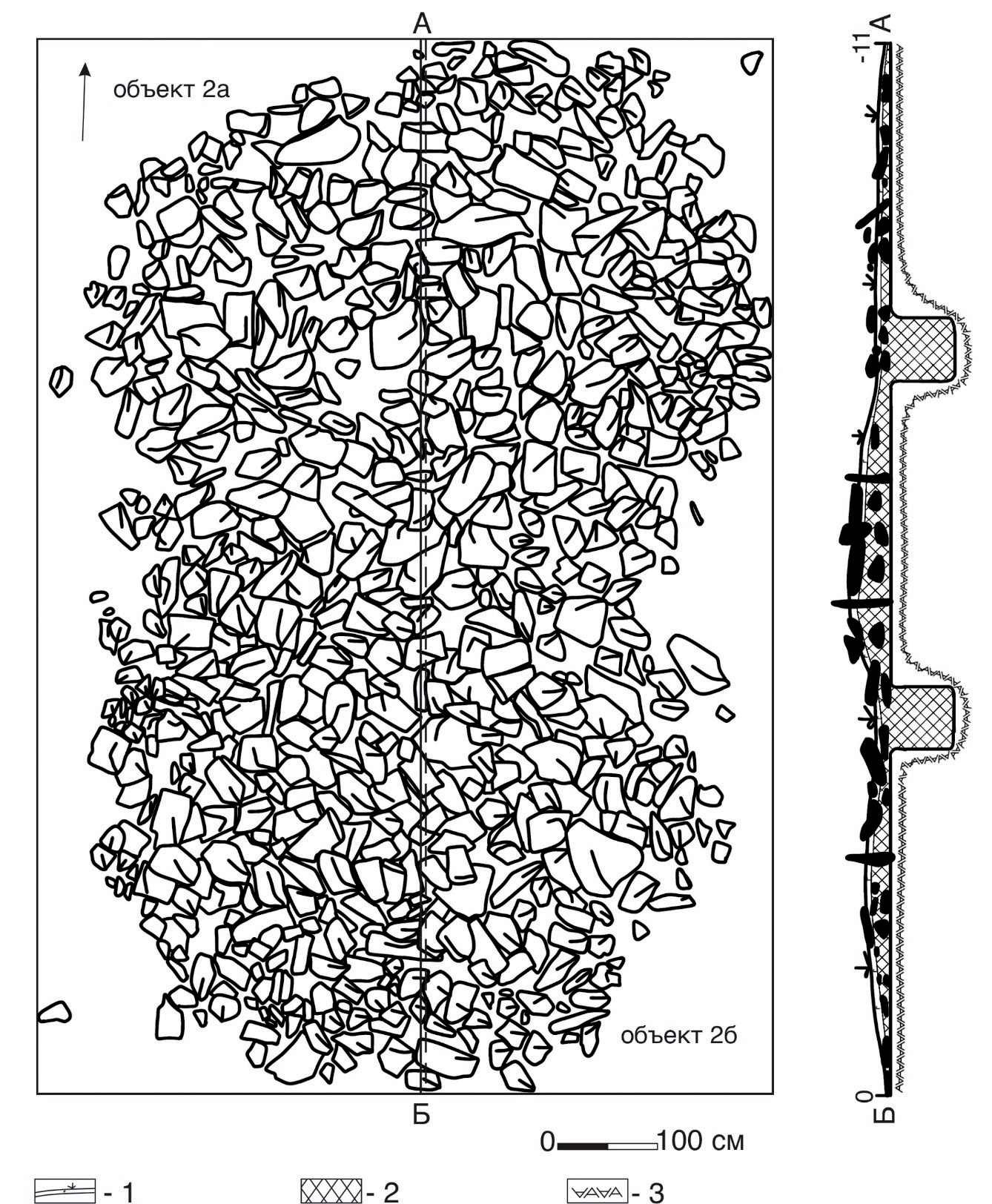Turkic cenotaph from Central Kazakhstan
(based on the materials of the Ketaban burial ground)
DOI:
https://doi.org/10.52967/akz2023.3.21.125.135Keywords:
archaeology, Central Kazakhstan, Ketaban, early Middle Ages, Turkic culture, Items of armaments and horse harnessAbstract
Early Middle Ages in Central Kazakhstan are marked by the spread of fundamentally new cultural stereotypes, connected with the Turks. These are as follows: characteristic quadrangular fences, the statuary tradition of a new iconographic appearance, changes in funeral rites, spread of new types of products, mainly stirrups. The structure no. 2 of the Ketaban burial ground was an octagonal complex of two stone barrows. It contained two fences with burials of horses accompanied by weapons and horse harness. According to the totality of the features presented in the ritual practice (presence of an intra-grave structure connected with the decoration of a human burial; items not related to the equestrian equipment, etc.), this object is interpreted as a cenotaph. Radiocarbon dating was carried out on a sample of horse bone at the Mass Spectrometry Laboratory of the Centre for Physical Sciences and Technology (Vilnius, Lithuania), using accelerated mass spectrometry. It has established the age of the structure within 1 half of 7th century (calibrated interval – 595–657). This agrees with typological analogues of iron stirrups and udis and allows to consider the structure no. 2 of Ketaban burial ground as one of the most ancient monuments of Turkic culture in Central Kazakhstan.
References
Zazovskaya, Je. P. 2016. In: Vestnik arheologii, antropologii i etnografii (Bulletin of Archaeology, Anthropology and Ethnography), 1 (32), 151-164 (in Russian).
Ilyushin, A. M. 2003. In: Soyonov V. I. (ed.). Drevnosti Altaja (Antiquities of Altai), 10. Gorno-Altaisk: Gorno-Altaisk State University, 132-137 (in Russian).
Kubarev, G. V. 2005. Kultura drevnih tyurok Altaya (po materialam pogrebalnyh pamyatnikov)(The culture of the ancient Turks of the Altai (based on funerary monuments)). Novosibirsk: Institute of Archaeology and ethnography SB RAS (in Russian).
Kukushkin, I. A., Dmitriev, E. A., Kukushkin, A. I. 2019. In: Bazarov B. V., Kradin N. N. (eds.). Kochevye imperii Evrazii v svete arheologicheskih i mezhdisciplinarnyh issledovaniy (Nomadic empires of Eurasia in the light of archaeological and interdisciplinary research), 1. Ulan-Ude: Buryat scientific center SB RAS, 135-137 (in Russian).
Neverov, S. V. 1998. In: Kiryushin Yu. F., Tishkin A. A. (eds.). Snaryazhenie verhovogo konya na Altae v rannem zheleznom veke i srednevekovie (Riding horse equipment in the Altai in the early Iron Age and Middle Ages). Barnaul: Altai University, 129-151 (in Russian).
Nesterov, S. P. 1990. Kon v kultah tyurkoyazychnyh plemen Tsentralnoy Azii v epohu srednevekoviya (The Horse in the Cults of the Turkic-speaking Tribes of Central Asia in the Middle Ages). Novosibirsk: “Nauka” Publ. (in Russian).
Ovchinnikova, B. B. 1984. In: Vasiliev, D. D., Kormysheva, E. A. (eds.). Drevniy i srednevekovyi Vostok. Istoriya, filologiya (Ancient and Medieval Orient. History, Philology). Moscow: “Nauka” Publ., 215-223 (in Russian).
Ovchinnikova, B. B. 1983. In: Zaharova I. V., Tomilov N. A. (eds.). Etnogenez i etnicheskaya istoriya tyurkskih narodov Sibiri i sopredelnyh territoriy (Ethnogenesis and ethnic history of the Turkic peoples of Siberia and adjacent territories). Omsk: Omsk State University, 60-68 (in Russian).
Ovchinnikova, B. B. 1990. Tyurkskie drevnosti Sayano-Altaya v VI–X vekah (Turkic Antiquities of Sayan-Altai in the 6th–10th centuries). Sverdlovsk: Uralsk State University (in Russian).
Seregin, N. N. 2017a. In: Narody i religii Evrazii(The peoples and religions of Eurasia), 3–4 (12–13), 9-23 (in Russian).
Seregin, N. N. 2017b. In: Teorija i praktika arheologicheskih issledovanij(Theory and practice of archaeological research), 1 (17), 36-47 (in Russian).
Seregin, N. N., Matrenin, S. S. 2016. Pogrebalnyi obryad kochevnikov Altaya vo II v. do n.e. – XI v. n.e (The funeral rites of Altai nomads in the 2nd century BC – 11th century AD). Barnaul: Altai University (in Russian).
Tishkin, A. A. 2009. Altai v mongolskoe vremya (po materialam arheologicheskih pamyatnikov) (Altai in Mongolian times (based on archaeological sites)). Barnaul: “Azbuka” Publ. (in Russian).
Tishkin, A. A., Seregin, N. N. 2011. In: Teoriya i praktika arheologicheskih issledovaniy (Theory and practice of archaeological research), 6, 14-32 (in Russian).
Reimer, P. J., Austin, W. E. N., Bard, E., Bayliss, A., …, Talamo, S. 2020. In: Radiocarbon, 62, 725–757.
Reimer, P. J., Bard, E., Bayliss, A., Beck, J. W., …, van der Plicht, J. 2013. In: Radiocarbon, 55, 3, 1869–1887.

Downloads
Published
How to Cite
Issue
Section
License
Copyright (c) 2023 Dmitriev, Ye., Kukushkin, A.

This work is licensed under a Creative Commons Attribution-NonCommercial 4.0 International License.






